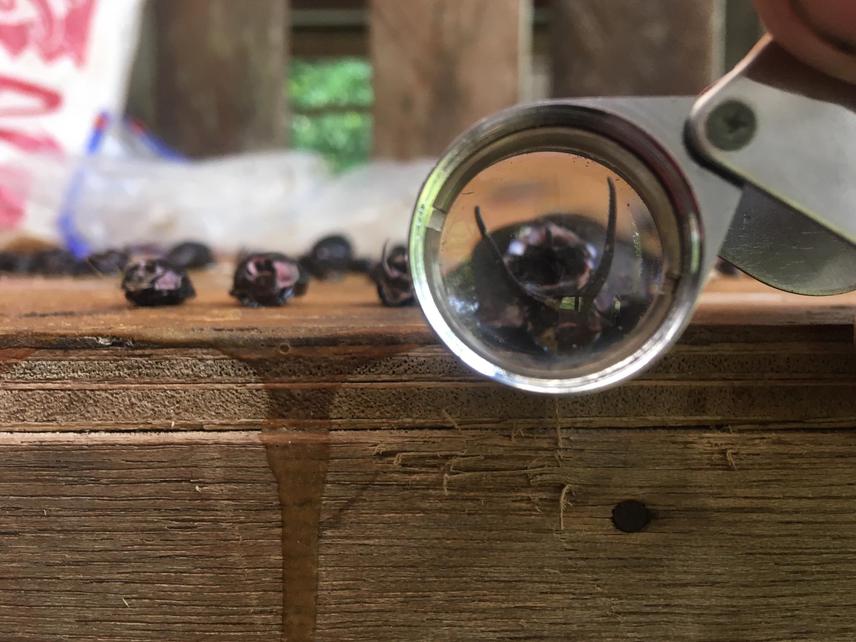Cindy Cosset
Other projects
The aim of this project is to determine how climber-cutting in selectively logged forests affects biodiversity, forest regeneration, timber yields and carbon stocks. A unique restoration experiment which applies different intensities of cutting climbers, such as woody vines and bamboos, will be set-up in the Ulu Segama-Malua Forest Reserve, Malaysian Borneo. We will sample bird, dung beetle, ant and floral communities before and after cutting treatments in addition to above-ground forest carbon. We will thus demonstrate how to best implement climber-cutting restoration to optimise diverse conservation, economic, carbon sequestration, forest regeneration and timber objectives within logged tropical forest.

ID-ing dung beetle samples.
Huge areas of tropical forest have been selectively logged. Although logging causes some species to decline, logged forests are increasingly shown to have high conservation value, hosting enormous amounts of wildlife and continuing to provide many valuable services to humankind. Unfortunately, many logged forests are imperilled by conversion to farmland, demanding that strategies incentivising their conservation be deployed. This is particularly important on Borneo, where most forests falling outside of protected areas have been heavily logged and are threatened by expanding oil palm plantations.
Following logging, there is an explosion of vines and bamboos. These can hamper forest regeneration by overtopping or choking understorey plants. Subsequently, this can slow the recovery of timber and carbon stocks in logged forests. Activities such as vine-cutting, however, can accelerate the recovery of timber and carbon values, therefore providing an economic rationale for preserving logged forests. However, intensive vine cutting could also remove important wildlife microhabitats, damaging biodiversity.
In this unique experiment large scale plots will be established in heavily logged forests in Malaysian Borneo. Within these, vine-cutting will be deployed along a gradient of intensities to establish the environmental and ecological consequences of an activity increasingly used across Borneo.
Biodiversity will be sampled by looking at birds, dung beetles, ants and plants both directly before and after vine-cutting, as well as for twenty years after. By sampling plant communities, we will also be able to determine how carbon and timber stocks respond over time to cutting, and whether forest structure recovers. This will allow us the investigate how to best replenish the economic value of logged forests whilst retaining the considerable biodiversity residing within them. By working with local scientists, students and colleagues at the Sabah Forestry department, this project will provide actionable evidence which will improve the management of Borneo’s logged forests.